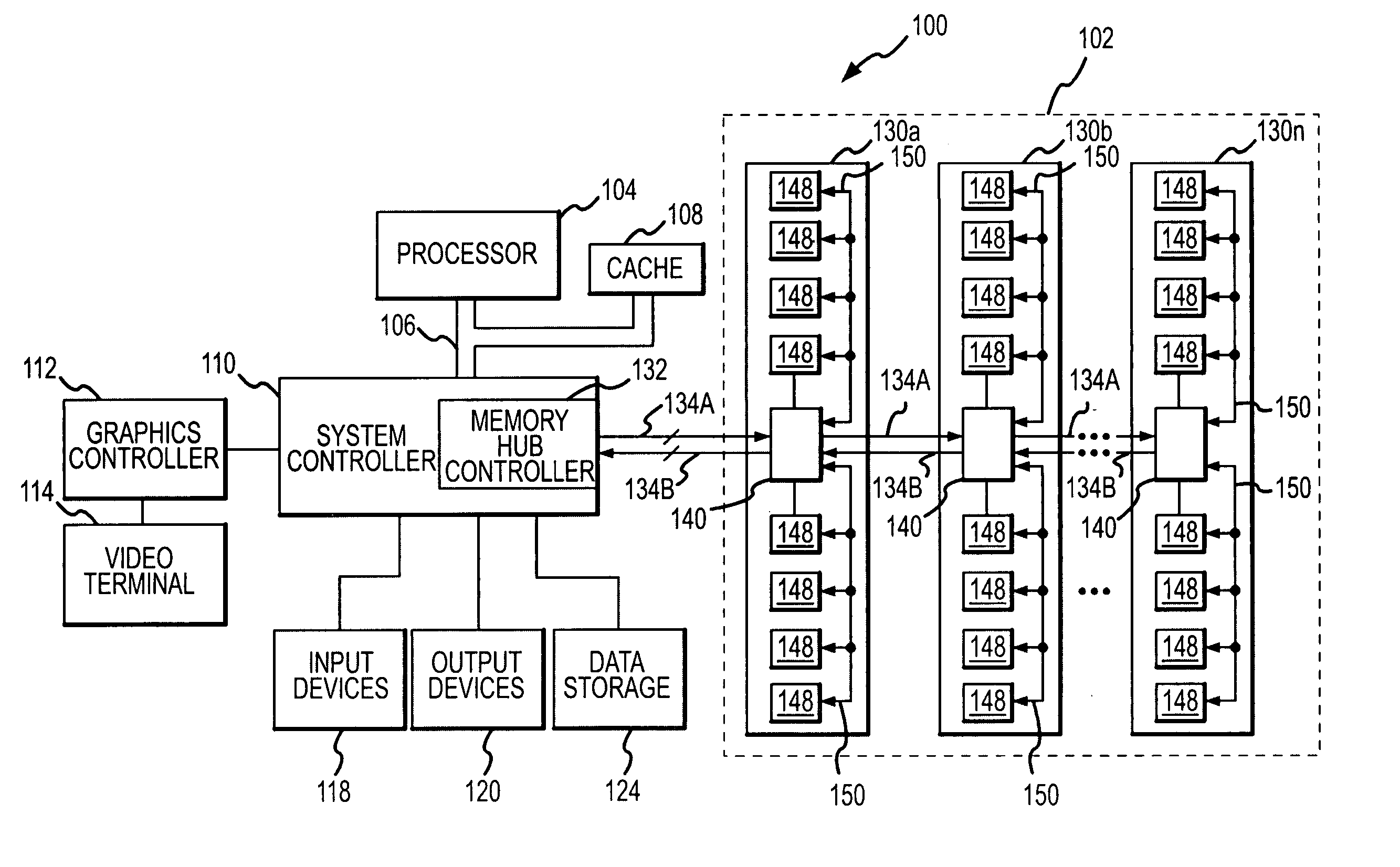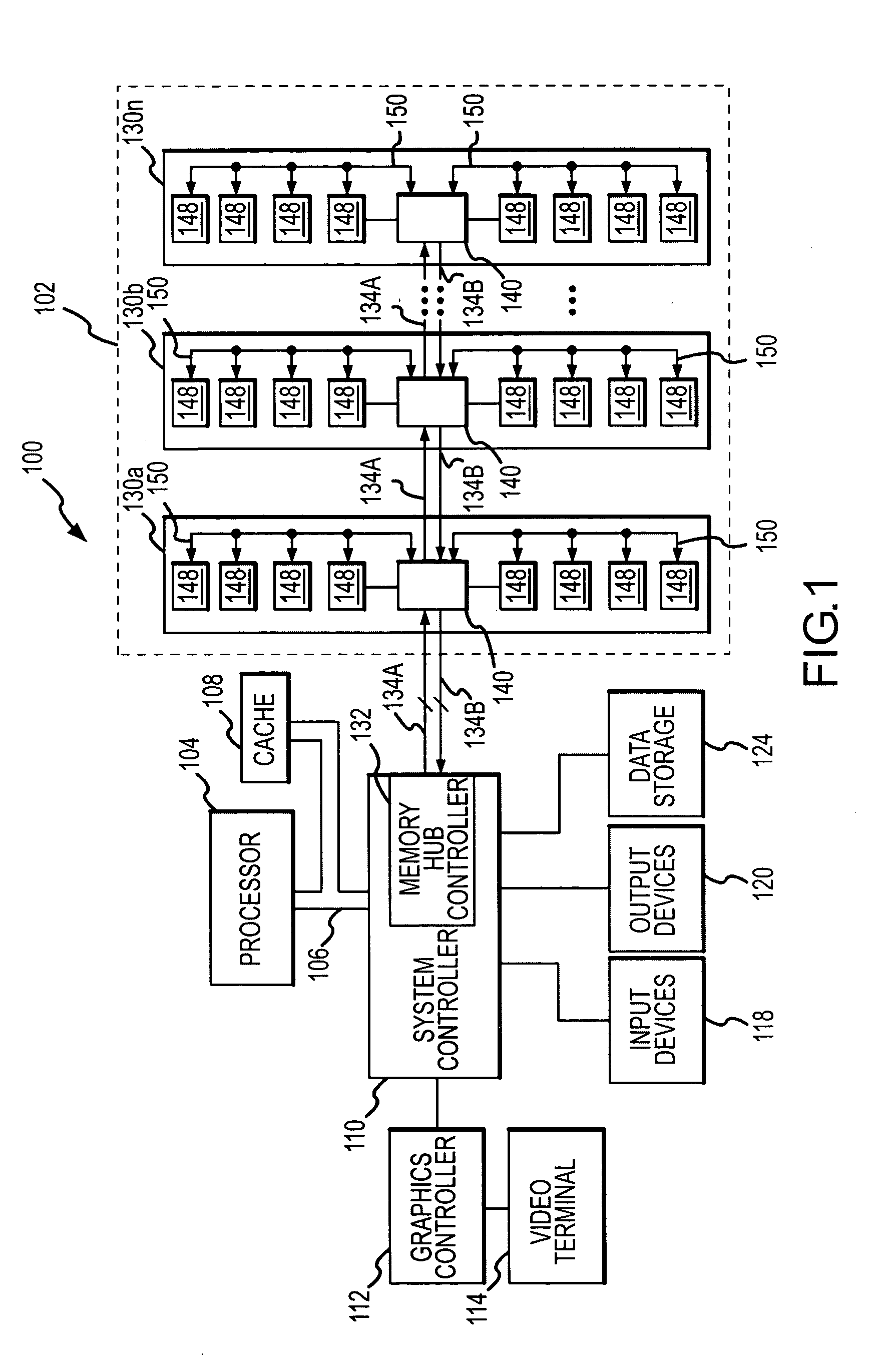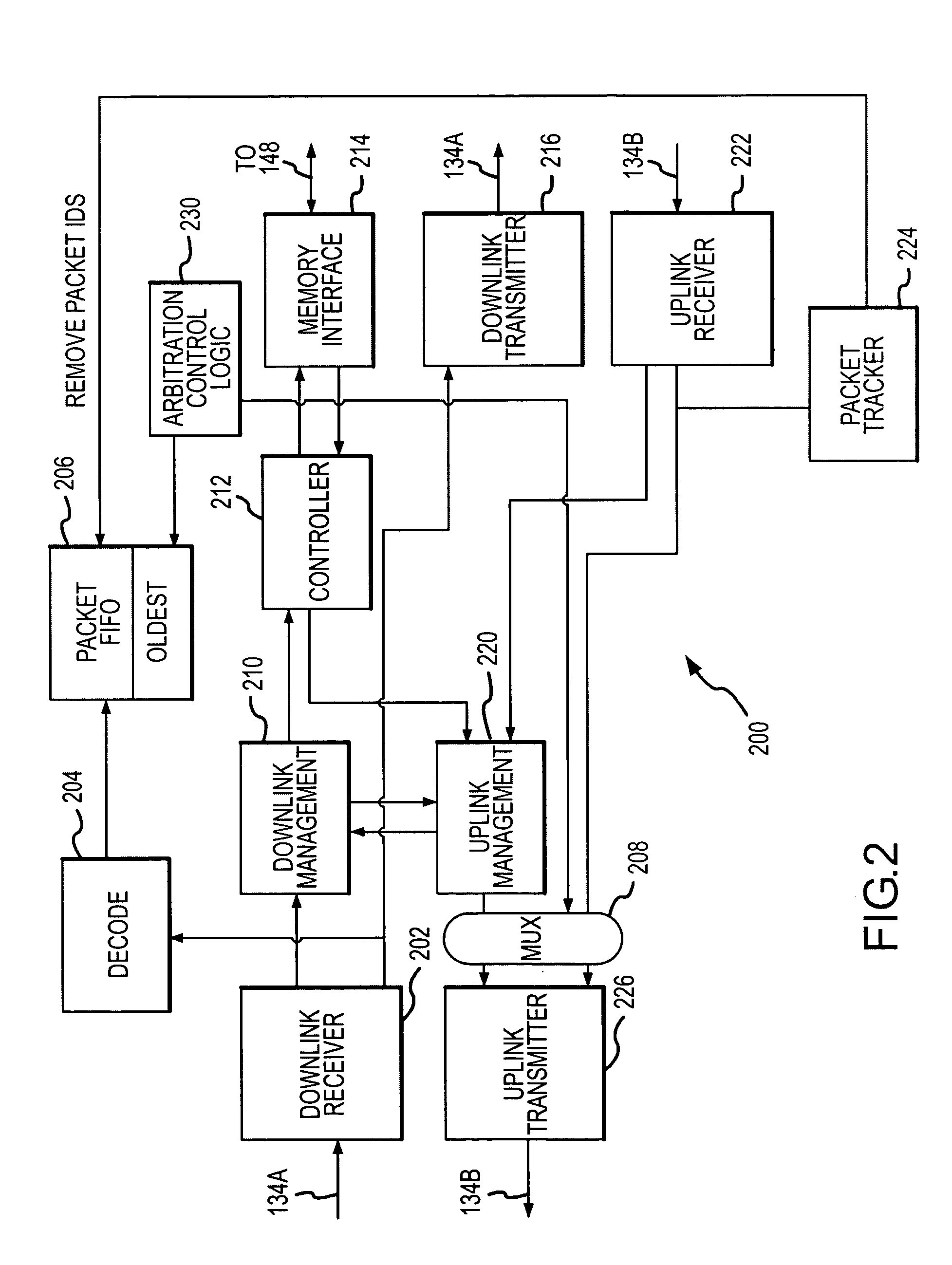Arbitration system having a packet memory and method for memory responses in a hub-based memory system
a hub-based memory and packet memory technology, applied in computing, instruments, electric digital data processing, etc., can solve the problems of slow memory controller limiting the data bandwidth between processors and memory devices, and increasing operating speed that has not kept pace with processor increases
- Summary
- Abstract
- Description
- Claims
- Application Information
AI Technical Summary
Benefits of technology
Problems solved by technology
Method used
Image
Examples
Embodiment Construction
[0014] A computer system 100 according to one example of the present invention is shown in FIG. 1. The computer system 100 includes a system memory 102 having a memory hub architecture including a plurality of memory modules 130, each memory module including a corresponding memory hub 140. Each of the memory hubs 140 arbitrates between memory responses from the memory module 130 on which the hub is contained and memory responses from downstream memory modules, and in this way the memory hubs effectively control the latency of respective memory modules in the system memory by controlling how quickly responses are returned to a system controller 110, as will be described in more detail below. In the following description, certain details are set forth to provide a sufficient understanding of the present invention. One skilled in the art will understand, however, that the invention may be practiced without these particular details. In other instances, well-known circuits, control signa...
PUM
 Login to View More
Login to View More Abstract
Description
Claims
Application Information
 Login to View More
Login to View More - R&D
- Intellectual Property
- Life Sciences
- Materials
- Tech Scout
- Unparalleled Data Quality
- Higher Quality Content
- 60% Fewer Hallucinations
Browse by: Latest US Patents, China's latest patents, Technical Efficacy Thesaurus, Application Domain, Technology Topic, Popular Technical Reports.
© 2025 PatSnap. All rights reserved.Legal|Privacy policy|Modern Slavery Act Transparency Statement|Sitemap|About US| Contact US: help@patsnap.com



